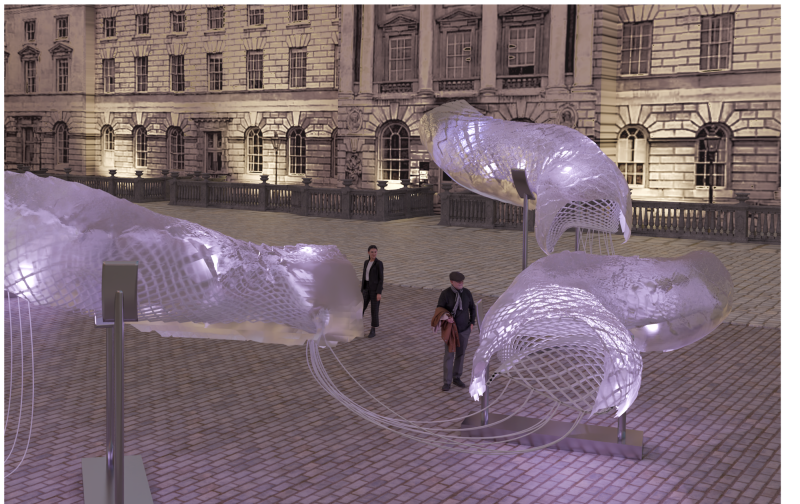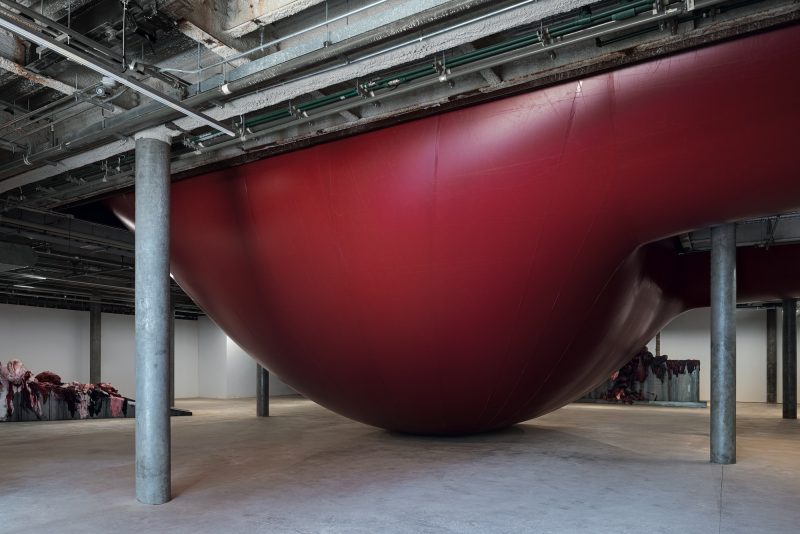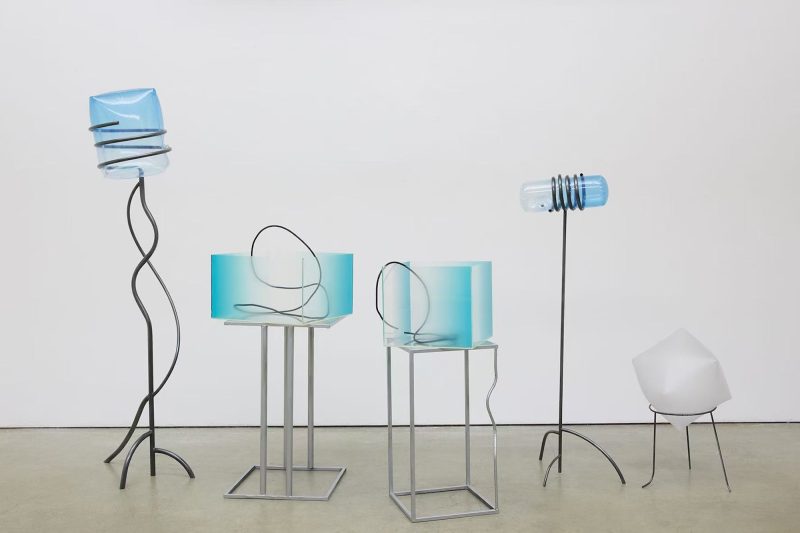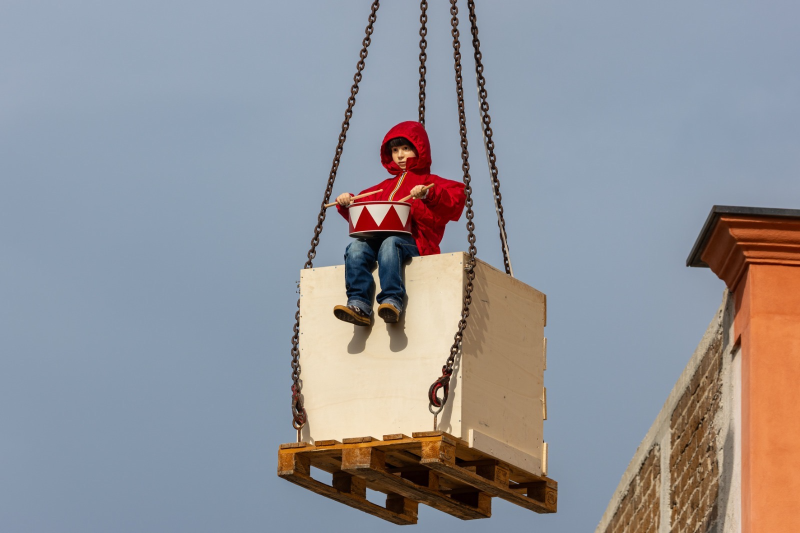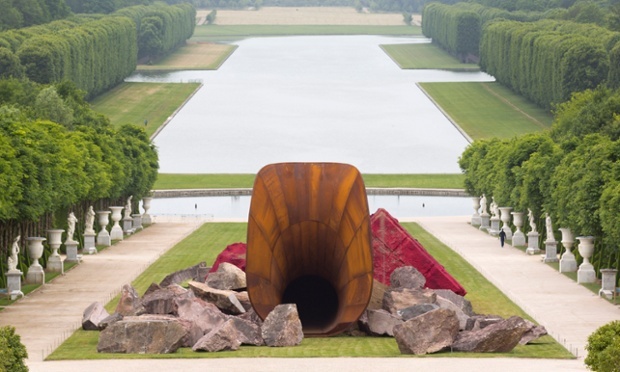
Anish Kapoor’s Dirty Corner. Photograph: Fabrice Seixas/Kapoor Studio
First Paul McCarthy’s towering “butt-plug” sculpture in Paris was vandalised amid protests by conservative groups; now the celebrated artist Anish Kapoor’s giant “vagina” at the Palace of Versailles is causing handwringing debate in France before it even opens to the public.
Kapoor is the latest in a line of high-profile modern artists invited to install new works at the Château de Versailles, the enormous palace built by the Sun King Louis XIV that came to symbolise the end of the monarchy and the French revolution.
Kapoor’s array of giant installations, which opens next week, is Paris’s biggest cultural event of the year and is already being hailed as a masterpiece – the first time a modern artist invited to Versailles has really tackled the bloody history of the revolution and the downfall of the king.
But after Kapoor described his installation Dirty Corner – a vast steel funnel amid broken stone – as “the vagina of the queen” taking power, controversy has been growing. The monumental, mysterious metal opening – installed so that it faces up towards the Palace – has sparked debate about whether it truly resembles a queen’s vagina, and if so, whether it is supposed to be that of the guillotined Marie Antoinette.
Versailles’s mayor and MP, François de Mazières, of Nicolas Sarkozy’s rightwing Républicains party, formerly the UMP, tweeted his disapproval, saying Kapoor had “slipped up” with the work. Then the Paris daily Le Parisien, describing Kapoor as a “genius provocateur”, reported that the public in Versailles were unimpressed that a giant vagina could grace the perfect formal lawns of the palace.
The culture weekly Les Inrocks shot back that this anti-vagina outrage was limited to far-right blogs and that Kapoor’s work was a welcome comment on Versailles’s symbolism of French power and identity. “Any controversy will just bring more visitors,” applauded the daily Le Figaro, hailing Kapoor’s work.
Kapoor’s presence at Versailles is one of France’s defining art shows this year. The Indian-born, London-based sculptor has gone further than any artist before him in taking on the powerful legacy of Versailles.
He is the first artist to install a work inside the deeply symbolic Jeu de Paume games room, which has come to represent the foundation of the notion of “liberty, equality, fraternity”. The room, once dedicated to an early form of tennis, was the site in 1789 of the founding act of French democracy when the nobility, clergy and deputies refused to submit to royal power and vowed to create a constitution.
Kapoor has used it for Shooting into the Corner, in which a cannon appears to have messily blasted out red wax in a metaphor of blood and guts – which the artist described in Le Journal du Dimanche as “clearly a phallic symbol” and part of “a controversial installation that raises the question of violence in contemporary society”. He said the head of the Palace of Versailles had been very “brave and generous” because his work was a “provocation”.
In Versailles’s vast and symmetric grounds perfectly designed by André Le Nôtre, Kapoor has also created ditches, disconcerting mirrors and a bottomless whirlpool. The artist said his work was in no way intended to be merely decorative. His pieces were meant to speak to the work of Le Nôtre, “who has ordered nature for eternity with his perfect geometric perspectives”.
He added: “Placing objects here and there means nothing. My idea was to upset the balance and invite chaos in.” All this “while preserving the integrity of this historic place – that was the principal difficulty.”
The team at the Château de Versailles is fiercely proud of having secured Kapoor’s presence, which it bills as a new “dialogue with history” and which is expected to attract hundreds of thousands of visitors. Kapoor is extremely popular in France; in 2011 his gigantic Leviathan installation in Paris’s Grand Palais attracted more than 250,000 visitors.
But Versailles’s new emphasis on contrasting modern art with the palace’s backdrop of pomp and monarchic folly has been littered with controversy from the start.
When the American sculptor and “king of kitsch” Jeff Koons became the first modern artist invited into Versailles in 2008, protesters feared that his giant lobsters and inflatable rabbits would sully France’s most popular château. Many warned of a possible conflict of interest, arguing that Koons’s first French exhibition would lead to the value of the works soaring, benefiting their private owners.
Later, the appearance at Versailles of a collection of daring works by the manga-inspired Japanese artist Takashi Murakami prompted petitions complaining that it was degrading and disrespectful. Royalist activists, convinced it was also illegal, protested outside the palace gates.
guardian.co.uk © Guardian News & Media Limited 2010
Published via the Guardian News Feed plugin for WordPress.
